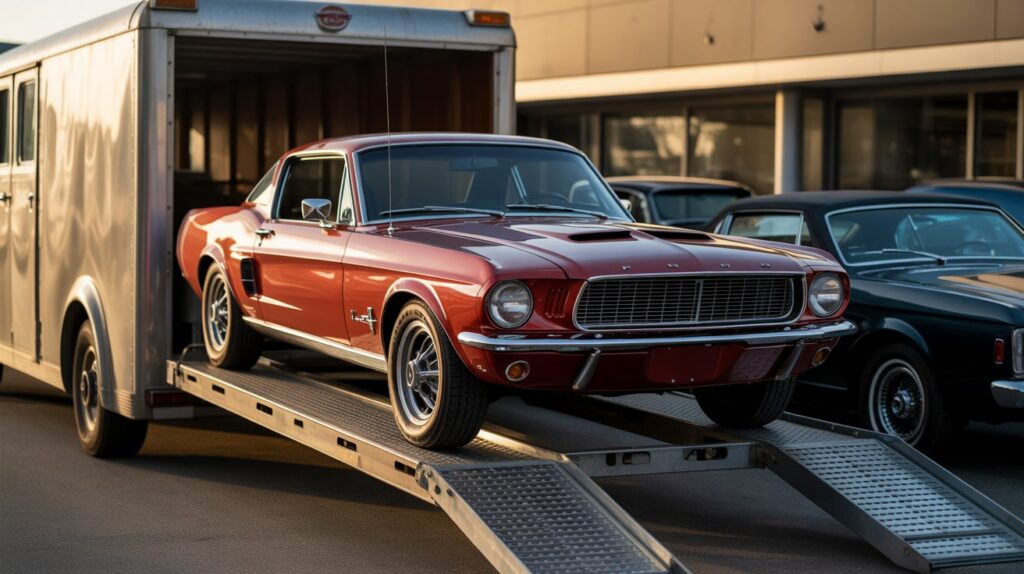Owning a historic automobile from Britain can be a thrilling experience for collectors in America. The process of classic car import from UK to the US has become more common among enthusiasts who seek timeless craftsmanship and heritage vehicles that represent the height of motoring history. Importing a classic car requires patience, attention, and a clear understanding of legal and logistical details.
Bringing such cars across the Atlantic involves careful documentation, inspection, and coordination between shippers and government agencies. With the right preparation, the experience can be rewarding, allowing you to enjoy a piece of British motoring culture on American roads.
Understanding the Process of Classic Car Import from the UK to the US
The process of classic car import from UK to the US begins long before the vehicle leaves British soil. Collectors must first confirm that the car qualifies as a classic under U.S. regulations, which usually means it must be at least twenty-five years old. This exemption allows older vehicles to enter without needing to meet current safety or emissions standards.
Buyers must secure proof of ownership, a bill of sale, and the car’s original title. After that, the vehicle undergoes inspection before shipment. Customs authorities in both countries review this documentation to confirm authenticity and compliance. Missing or incorrect paperwork can delay clearance, so accuracy is key.
Choosing a reliable car shipping company is equally important. Many importers prefer to work with companies that specialize in vintage automobiles. These professionals handle customs forms, arrange transport insurance, and coordinate with freight carriers that understand how to handle delicate cars.
Shipping Options for a Classic Car Import UK to US
When arranging a classic car import from UK to the US, the two main shipping options are container shipping and roll-on/roll-off service. Each has its advantages depending on budget and vehicle value.
Container shipping protects the car inside a sealed metal unit. This method costs more but offers maximum protection against weather, saltwater, and handling risks. It is often the preferred choice for high-value models that require careful treatment.
Roll-on/roll-off shipping involves driving the car onto a specialized vessel. It costs less but leaves the vehicle more exposed to external conditions. Still, many importers use this option for cars that are in good but not pristine condition.
Before shipping, the car should be cleaned, drained of fuel, and photographed for insurance purposes. These records provide proof of the car’s state before loading and can be useful if any damage occurs during transit.
Customs and Compliance for Classic Car Import from the UK to the US
Compliance is the backbone of a classic car import from UK to the US. The U.S. Customs and Border Protection agency oversees entry, ensuring that all vehicles meet import standards. For classic models older than twenty-five years, the process is simpler because they are exempt from most Department of Transportation and Environmental Protection Agency requirements.
Still, importers must file key documents including the EPA Form 3520-1 and DOT Form HS-7. These confirm that the vehicle meets the exemption category. Customs duties usually equal 2.5 percent of the car’s declared value for personal imports. British-made vehicles originally manufactured in the UK often qualify for favorable rates under trade agreements, reducing overall costs.
Working with a customs broker can streamline the process. Brokers understand the codes, forms, and inspections required to clear the vehicle smoothly. Many importers find that hiring one saves both time and money while reducing the risk of mistakes.
Preparing for Arrival and Registration in the United States
Once a classic car import from UK to the US shipment arrives, the vehicle must pass through customs inspection. After clearance, it can be transported to your home or restoration facility. Owners should then register the car in their state. Each state has different requirements, but most ask for proof of customs clearance, a bill of sale, and the foreign title.
Some states may also request a safety inspection before issuing a registration plate. Since these cars often lack modern safety features, exemptions or special classifications may apply. Once registered, the car becomes legal for road use, and the owner can enjoy its historical charm and performance.
Collectors who plan to display their car at events should keep all import and registration paperwork safe. Authentic documentation adds value to the vehicle’s provenance, confirming that it was legally imported and registered in compliance with U.S. laws.
Tips for a Smooth Classic Car Import Experience
Success in classic car import from UK to the US transactions depends on attention to detail and preparation. Choose a trusted seller and confirm the car’s authenticity before purchase. Arrange for a pre-shipment inspection by a professional familiar with vintage vehicles.
Stay organized with your documents, from invoices to customs forms. Work with shipping agents who have experience handling valuable cars and can offer enclosed transport options. Purchase comprehensive insurance that covers the full value of the car during shipping and transit.
By handling every stage with care, you can avoid setbacks and enjoy the experience of owning a British classic on American soil. From the first inquiry to the final registration, the satisfaction of seeing your car arrive safely makes the effort worthwhile.





